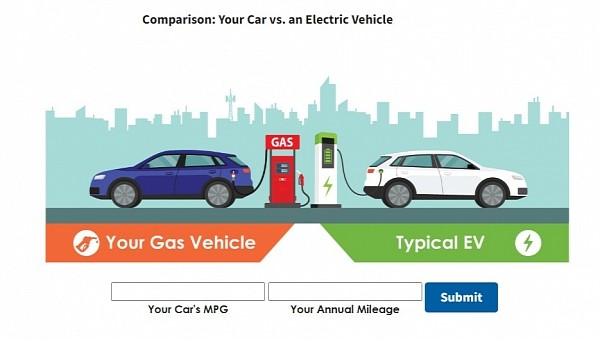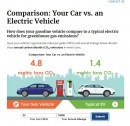Whether we like it or not, we live in a world that’s undoubtedly headed toward making the switch to electric mobility. The reason at the forefront of this shift is the reduction in emissions, and EPA launched a comparison tool to show exactly that.
However, there is one problem with this tool. It only takes into account your projected annual CO2 emissions compared to a standard 2022 production EV. On top of that, the scales are severely tipped in favor of EVs.
It’s understandable that this can be a sensitive topic for both parties, which can spark debate. But before touting one side as the absolute winner, we must first look at the broader picture.
The comparison tool shows both the tailpipe CO2 emissions and the upstream emissions. The former refers to the amount of carbon dioxide your vehicle shoots into the air by consuming one gallon of gasoline, and it is calculated at 8,887 grams CO2/ gallon (or 2348g CO2/liter). This is all fair, as eliminating the need for fossil fuels is the main reason for getting an EV.
The latter looks at the emissions caused by overall gasoline production, like drilling, refining, and transporting. While this is also a fair statistic to account for, it does not tell the entire story for one simple reason.
When it comes to EVs, the only emissions considered are those caused by the production of the electricity which makes them run. Even so, the value used for EV emissions caused by energy production can vary wildly and have a huge impact in countries with a dirty energy profile.
There is also no accounting for the emissions brought about by the production of the vehicles themselves (where EVs are at a significant disadvantage). While over a life-cycle, EVs win this category, too, there is no information given to the user to understand where the emission parity occurs.
There is no feature where you can learn about the battery production process and carbon footprint. Neither is there any disclaimer where you can learn about the impact lithium mining has on the communities in the surrounding area. This is without even bringing cobalt mining into the discussion.
One more thing that must be taken into account is how the green energy grid works and how clean specific sources are. The user of this tool has to do independent research to find out the environmental footprint and resource consumption, and CO2 parity of various sources of green energy, such as solar or wind.
Even so, EVs are clearly the superior choice in a lot of countries. But not making this kind of information readily available on such a comparison tool is definitely not the best course of action.
Overall, this is still a good tool, that does an adequate job of informing about the emission profile of your vehicle, albeit only when it comes to fuel/electricity consumption. But it has to be taken with a pinch of salt, as it demonizes ICE vehicles while painting a very narrow picture.
It’s understandable that this can be a sensitive topic for both parties, which can spark debate. But before touting one side as the absolute winner, we must first look at the broader picture.
The comparison tool shows both the tailpipe CO2 emissions and the upstream emissions. The former refers to the amount of carbon dioxide your vehicle shoots into the air by consuming one gallon of gasoline, and it is calculated at 8,887 grams CO2/ gallon (or 2348g CO2/liter). This is all fair, as eliminating the need for fossil fuels is the main reason for getting an EV.
The latter looks at the emissions caused by overall gasoline production, like drilling, refining, and transporting. While this is also a fair statistic to account for, it does not tell the entire story for one simple reason.
When it comes to EVs, the only emissions considered are those caused by the production of the electricity which makes them run. Even so, the value used for EV emissions caused by energy production can vary wildly and have a huge impact in countries with a dirty energy profile.
There is also no accounting for the emissions brought about by the production of the vehicles themselves (where EVs are at a significant disadvantage). While over a life-cycle, EVs win this category, too, there is no information given to the user to understand where the emission parity occurs.
There is no feature where you can learn about the battery production process and carbon footprint. Neither is there any disclaimer where you can learn about the impact lithium mining has on the communities in the surrounding area. This is without even bringing cobalt mining into the discussion.
One more thing that must be taken into account is how the green energy grid works and how clean specific sources are. The user of this tool has to do independent research to find out the environmental footprint and resource consumption, and CO2 parity of various sources of green energy, such as solar or wind.
Even so, EVs are clearly the superior choice in a lot of countries. But not making this kind of information readily available on such a comparison tool is definitely not the best course of action.
Overall, this is still a good tool, that does an adequate job of informing about the emission profile of your vehicle, albeit only when it comes to fuel/electricity consumption. But it has to be taken with a pinch of salt, as it demonizes ICE vehicles while painting a very narrow picture.






